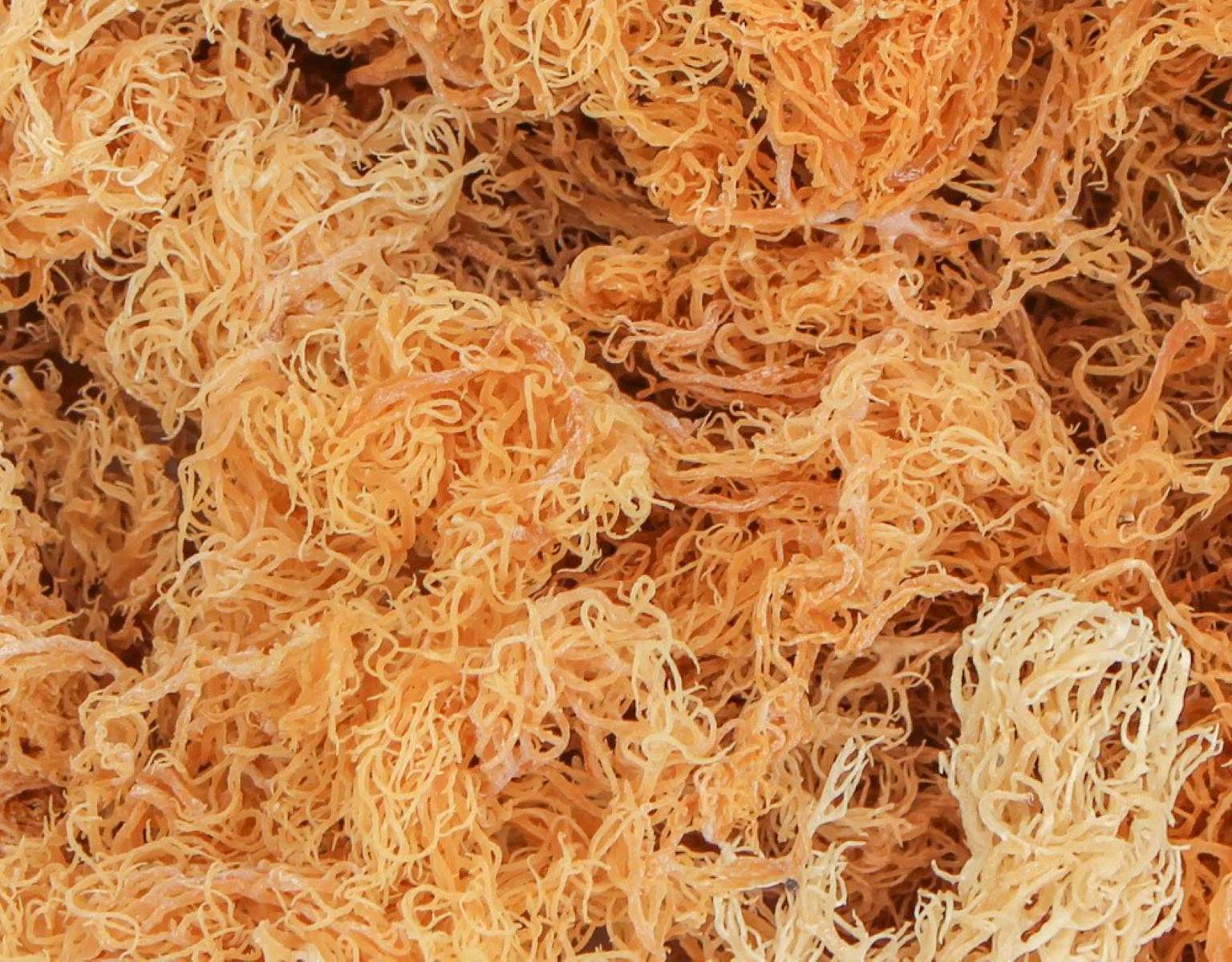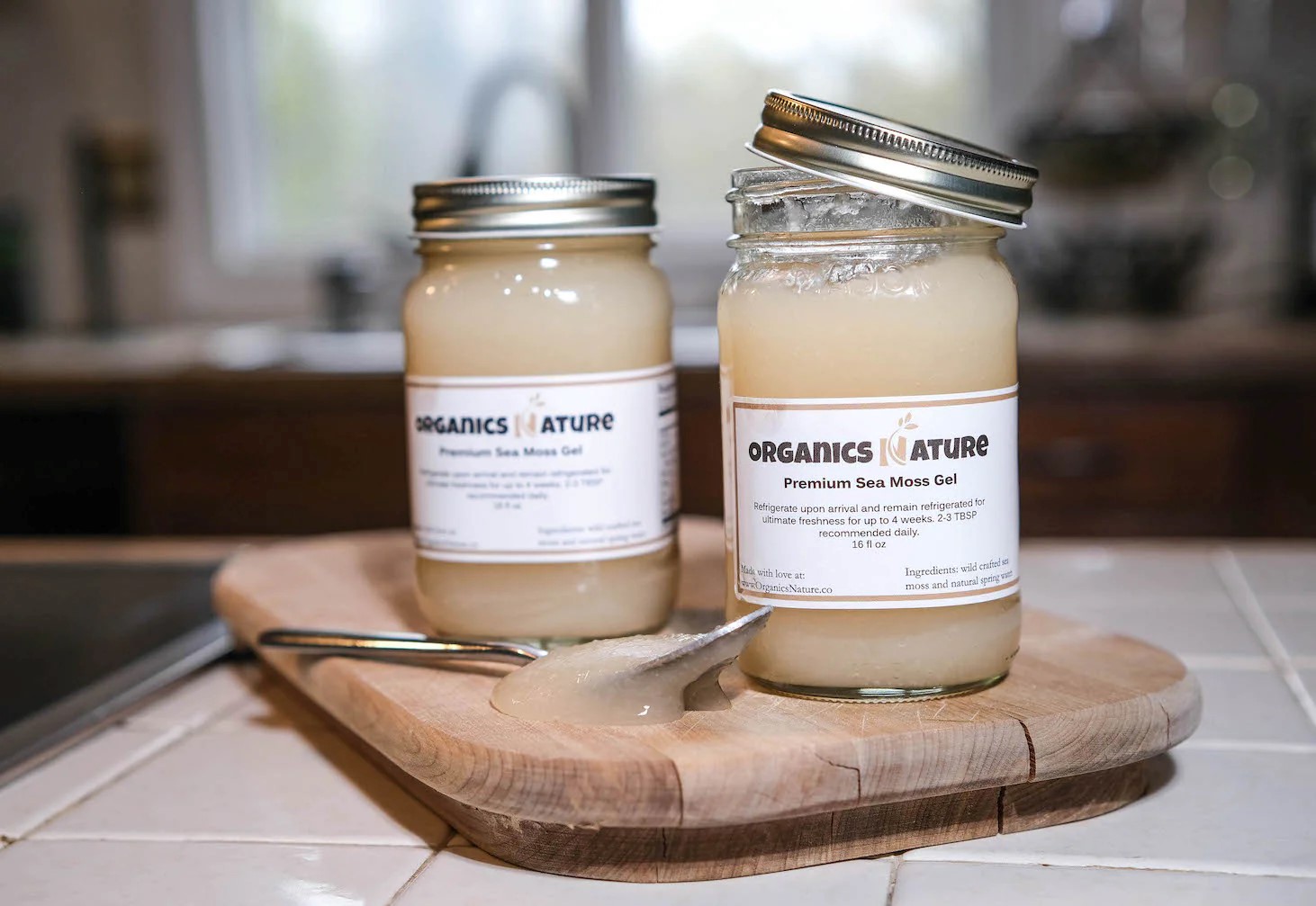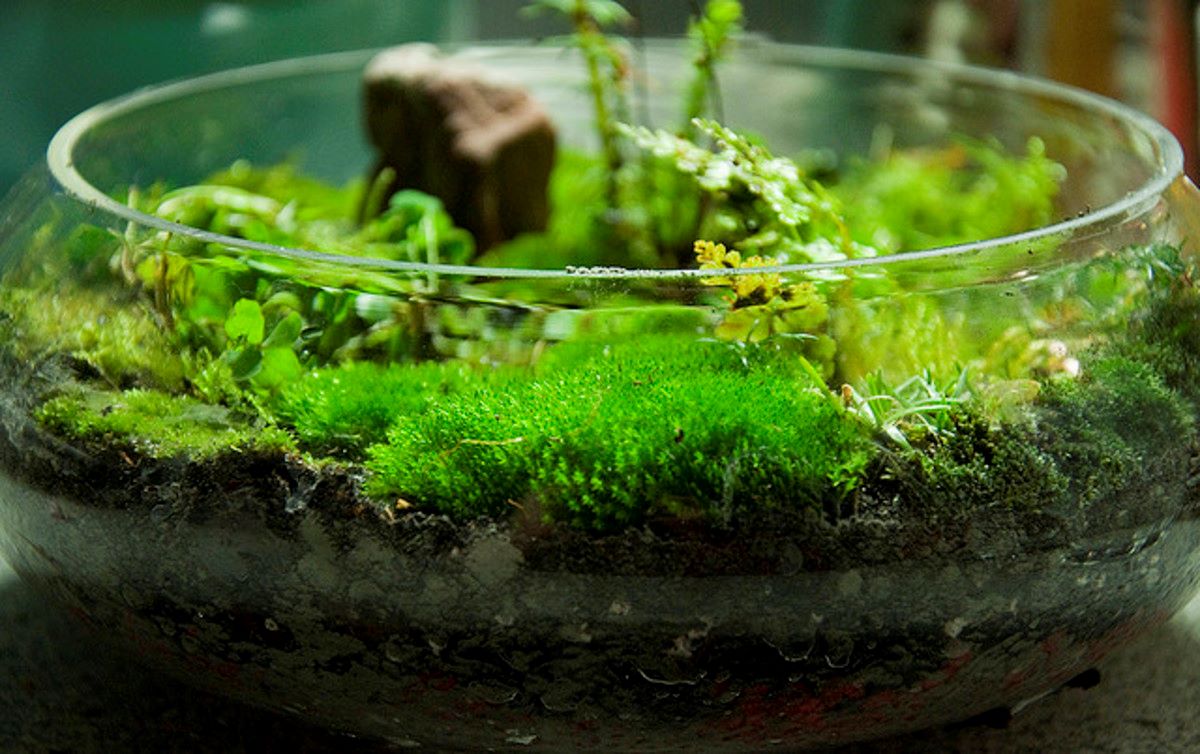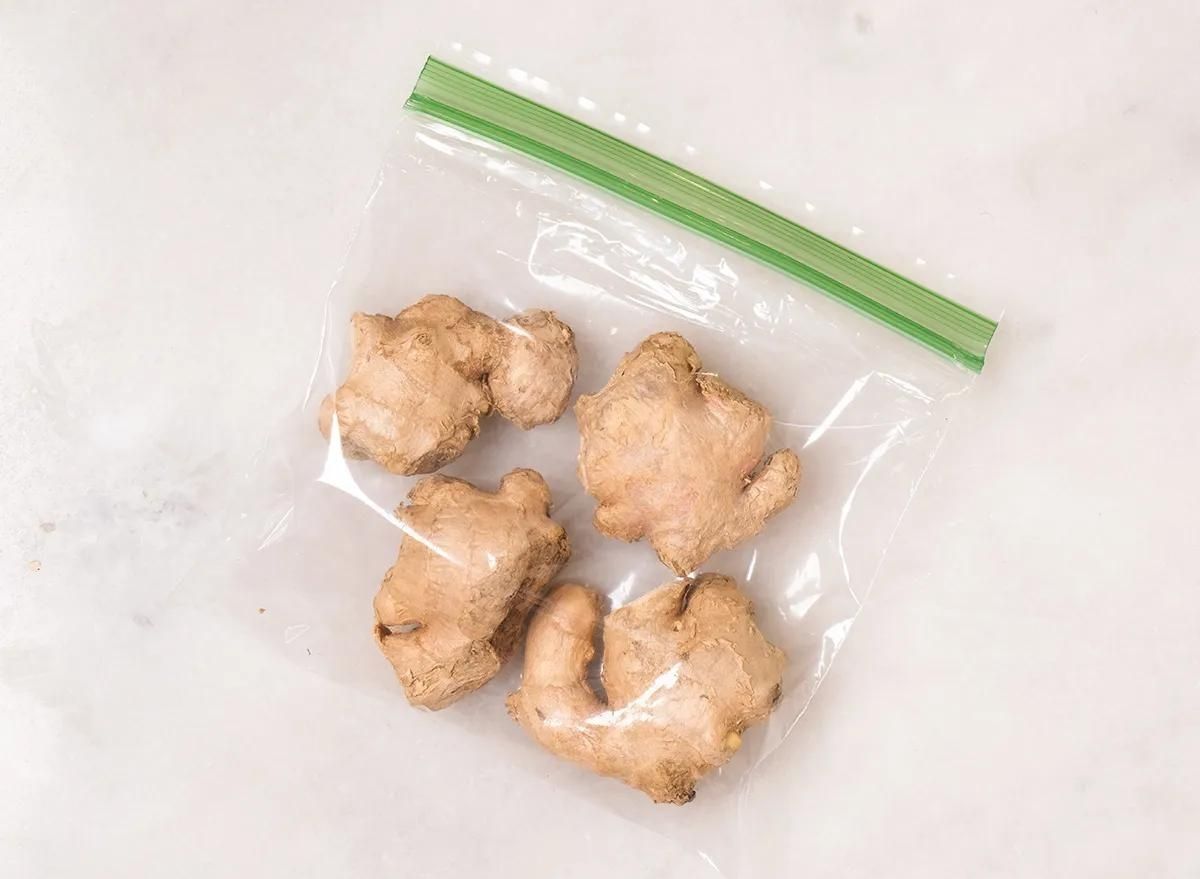

Articles
How To Store Raw Sea Moss
Modified: February 29, 2024
Learn the best methods for storing raw sea moss in this comprehensive article. Proper storage techniques ensure maximum freshness and quality for this nutrient-rich superfood.
(Many of the links in this article redirect to a specific reviewed product. Your purchase of these products through affiliate links helps to generate commission for Storables.com, at no extra cost. Learn more)
Introduction
Welcome to this guide on how to store raw sea moss! Sea moss has gained popularity in recent years due to its numerous health benefits. This nutrient-rich seaweed is known for its high content of vitamins, minerals, and antioxidants, making it a valuable addition to any diet.
Whether you have just purchased fresh sea moss or harvested it yourself, proper storage is essential to maintain its freshness and quality. In this article, we will discuss the steps you need to follow to store raw sea moss effectively. By doing so, you will be able to enjoy its benefits for a longer period.
So, let’s dive in and explore the best practices for storing sea moss!
Key Takeaways:
- Proper storage of raw sea moss is crucial for maintaining its freshness and nutritional benefits. From selecting fresh sea moss to cleaning and preparing it, each step plays a vital role in preserving its optimal condition.
- Whether stored in the refrigerator or freezer, maintaining the right temperature, avoiding excessive air exposure, and regularly checking for spoilage are essential practices to ensure the longevity of sea moss. Follow these tips to maximize its freshness and quality.
Read more: How To Store Sea Moss
What is Sea Moss?
Sea moss, also known as Irish moss, is a type of seaweed that grows along the Atlantic coastlines of Europe and North America. It has been consumed for centuries due to its potential health benefits and culinary uses. Sea moss is rich in essential vitamins and minerals, including iodine, potassium, calcium, and magnesium. It also contains a variety of antioxidants and dietary fiber.
Traditionally, sea moss has been used in Irish and Caribbean cuisines as a thickening agent for soups, stews, and desserts. It can also be consumed in its raw form or made into a gel by soaking and blending it with water. The gel-like consistency of sea moss makes it a popular ingredient in smoothies, shakes, and even skincare products.
Aside from its culinary applications, sea moss is believed to have several health benefits. It is touted for its potential to boost immune function, aid in digestion, promote thyroid health, and improve skin health. Additionally, sea moss is often sought after for its potential ability to support respiratory and cardiovascular health.
It’s important to note that while sea moss has gained attention for its potential health benefits, more research is needed to fully understand its effects on human health. As with any dietary addition, it’s best to consult with a healthcare professional before making significant changes to your diet or incorporating sea moss into your routine.
Benefits of Sea Moss
Sea moss is known for its impressive nutritional profile, which contributes to several potential health benefits. Here are some of the key benefits associated with consuming sea moss:
- Rich in vitamins and minerals: Sea moss is packed with essential vitamins, such as vitamin C and E, and minerals like iron, zinc, and selenium. These nutrients are vital for maintaining a healthy immune system, promoting cell growth and repair, and supporting overall well-being.
- Supports thyroid function: Sea moss contains high levels of iodine, which is crucial for proper thyroid function. Iodine deficiency can lead to thyroid disorders, such as hypothyroidism or goiter. Including sea moss in your diet can help ensure an adequate intake of iodine and support thyroid health.
- Aids digestion: The high fiber content in sea moss makes it an effective natural remedy for digestive issues. Its mucilaginous properties can help soothe the digestive tract and promote bowel regularity. Sea moss may also help to alleviate symptoms of conditions like gastritis, indigestion, and irritable bowel syndrome (IBS).
- Promotes healthy skin: Sea moss is becoming increasingly popular in skincare products due to its potential benefits for skin health. It contains essential nutrients that can nourish and hydrate the skin, improve collagen production, and enhance elasticity. Sea moss may also help soothe skin conditions such as eczema, psoriasis, and acne.
- Boosts immune function: The abundance of vitamins and minerals in sea moss, coupled with its potential anti-inflammatory and antioxidant properties, can support a healthy immune system. This can help the body defend against infections and protect against oxidative stress.
While these benefits are promising, it’s important to remember that individual experiences may vary, and more research is needed to fully understand the potential effects of sea moss on human health. It’s always a good idea to consult with a healthcare professional before incorporating sea moss into your diet or using it as a natural remedy.
Selecting Fresh Sea Moss
When it comes to storing sea moss, selecting the freshest and highest-quality product is essential. Here are some tips to help you choose fresh sea moss:
- Appearance: Look for sea moss that has a vibrant and rich color. It should be a deep, dark shade of green or purple, depending on the variety. Avoid sea moss that appears dull, discolored, or has any signs of mold or spoilage.
- Texture: Fresh sea moss should have a firm and slightly slippery texture. It should not feel slimy or slimy to the touch. Avoid sea moss that feels overly soft or mushy, as this may indicate that it is not fresh.
- Smell: Take a whiff of the sea moss. It should have a mild, fresh, and slightly oceanic scent. Avoid sea moss with a strong, unpleasant, or fishy smell, as this may indicate that it is not fresh or has begun to spoil.
- Source and Quality: Whenever possible, opt for sea moss that is sustainably sourced and harvested. Check for reputable brands or suppliers that prioritize quality and take proper measures to ensure the seaweed is clean and free from contaminants.
- Packaging: Choose sea moss that is securely sealed and packaged to maintain freshness. Look for products that are stored in airtight containers or sealed bags to prevent moisture and air exposure.
It’s worth noting that fresh sea moss may not always be available, especially if you live in an area far from coastal regions. In such cases, you may consider purchasing dried sea moss, which can be rehydrated and used similarly to fresh sea moss. Just make sure to follow the package instructions for rehydration.
By selecting fresh sea moss with care, you can ensure that you are starting with a high-quality product, which will contribute to better storage and overall enjoyment of its benefits.
Cleaning and Preparing Sea Moss
Before storing sea moss, it’s important to properly clean and prepare it to ensure its freshness and remove any impurities. Here’s a step-by-step guide on how to clean and prepare sea moss:
- Rinse thoroughly: Start by rinsing the sea moss under cool running water to remove any debris, sand, or salt. Use your hands to gently rub the sea moss to ensure a thorough cleaning.
- Soak in water: Place the sea moss in a bowl or basin and cover it with fresh, clean water. Allow it to soak for at least 4 to 6 hours or overnight. This step is crucial to rehydrate the sea moss and remove any excess salt.
- Inspect and discard: After soaking, carefully inspect the sea moss for any remaining impurities. Remove any discolored or damaged parts of the sea moss. It’s important to discard any sea moss that appears spoiled or has an unpleasant odor.
- Blend or blend: Once the sea moss is properly cleaned and trimmed, you can proceed to blend it with fresh water to create a gel-like consistency. Use a blender or food processor to blend until you achieve a smooth and creamy texture. This step is optional, but many people prefer to use sea moss gel for easier storage and consumption.
Note: If you opt to blend the sea moss, it’s important to maintain a 1:1 ratio of sea moss to water to maintain its natural consistency and prevent dilution.
Once the sea moss is cleaned, prepared, and transformed into a gel, it is ready for proper storage.
Remember, handling sea moss with clean hands and using clean utensils throughout the process is crucial to prevent contamination and maintain its freshness.
Read more: How To Store Dry Sea Moss
Storing Sea Moss
Proper storage is key to maintaining the freshness and quality of sea moss. Here are the essential steps to store sea moss effectively:
- Choose appropriate storage containers: Opt for airtight containers or glass jars with tight-fitting lids to store sea moss. These containers will help prevent moisture and air exposure, which can lead to spoilage and deterioration of the seaweed.
- Consider portioning: If you have a large batch of sea moss, it’s a good idea to portion it into smaller containers. This way, you can defrost or use only the amount you need without repeatedly thawing and refreezing the entire batch.
- Label containers: To easily identify and keep track of the sea moss, label each container with the date of preparation or purchase. This will help you track its freshness and avoid confusion when you have multiple batches stored.
- Choose appropriate storage location: Sea moss should be stored in a cool, dark place away from direct sunlight and heat sources. A pantry or cupboard is an ideal location. Avoid storing sea moss near items with strong odors, as it can absorb odors easily.
While there are different approaches to storing sea moss, the two most common methods are refrigeration and freezing. Let’s explore each method in detail.
Store raw sea moss in an airtight container in a cool, dark place, away from direct sunlight and moisture. This will help preserve its freshness and nutrients for longer.
Proper Storage Containers
Choosing the right storage container is essential to maintain the freshness and quality of sea moss. Here are some considerations when selecting proper storage containers:
- Airtight containers: Opt for containers that have airtight seals to prevent moisture, air, and contaminants from entering. This will help extend the shelf life of sea moss and keep it fresh for longer.
- Glass jars or containers: Glass containers are an excellent choice for storing sea moss. They are non-reactive, durable, and won’t leach any harmful chemicals into the seaweed. Additionally, glass allows you to see the contents inside, making it easier to track its freshness.
- Tight-fitting lids: Ensure that the containers have tight-fitting lids to create a secure seal, preventing any air from entering. This will help maintain the optimum moisture content of the sea moss and preserve its quality.
- BPA-free containers: If using plastic containers, make sure they are BPA-free. Bisphenol A (BPA) is a chemical found in some plastics that may leach into food and cause potential health risks.
- Easy to clean: Select containers that are easy to clean, as maintaining proper hygiene is crucial when storing sea moss. Glass jars and BPA-free plastic containers are typically dishwasher-safe and easy to sterilize.
Remember to thoroughly clean and dry the containers before using them to store sea moss, as any residual moisture can promote the growth of mold or bacteria. By choosing the right storage containers, you can help ensure that your sea moss stays fresh and of high quality for an extended period.
Storing Sea Moss in the Refrigerator
The refrigerator is a popular and effective method for storing sea moss, as it provides a cool and controlled environment. Here’s how to store sea moss in the refrigerator:
- Transfer to airtight containers: After cleaning and preparing the sea moss, transfer it to airtight containers or glass jars with tight-fitting lids. Ensure that the containers are clean and dry before placing the sea moss inside.
- Label and date the containers: To keep track of the freshness of your sea moss, label each container with the date of preparation or purchase. This way, you can easily identify how long it has been stored and use it before its quality begins to deteriorate.
- Place in the refrigerator: Store the sea moss containers in the refrigerator’s main compartment (not the door) at a temperature between 34°F to 40°F (1°C to 4°C). This temperature range helps maintain the freshness and quality of the sea moss.
- Avoid cross-contamination: To prevent cross-contamination and the absorption of odors, place the sea moss containers away from strong-smelling foods like onions, garlic, or seafood.
- Regularly check for freshness: Regularly inspect the sea moss for any signs of spoilage, such as discoloration, an off smell, or a slimy texture. If you notice any of these signs, discard the sea moss immediately.
When stored properly in the refrigerator, sea moss can typically maintain its freshness for up to 1 to 2 weeks. However, this can vary depending on the initial quality of the sea moss and how well it has been cleaned and prepared.
Remember, the refrigerator is an excellent short-term storage option for sea moss, especially if you plan to use it within a week or two. If you want to store it for a longer period, consider freezing the sea moss.
Storing Sea Moss in the Freezer
If you want to store sea moss for an extended period, freezing is a great option. Freezing helps preserve the freshness and quality of sea moss for several months. Here’s how to store sea moss in the freezer:
- Prepare sea moss for freezing: Clean and prepare the sea moss as usual, following the steps mentioned earlier. It is recommended to blend the sea moss into a gel-like consistency before freezing for easier use later on.
- Portion into freezer-safe containers: Divide the sea moss into portion sizes that you are likely to use in one go. Place each portion into separate freezer-safe containers or ice cube trays. Leave a small amount of space at the top as the sea moss may expand slightly when frozen.
- Seal and label the containers: Ensure that the containers are sealed tightly to prevent freezer burn and the absorption of odors. Label each container with the date of freezing to keep track of its freshness.
- Store in the freezer: Place the sealed containers in the freezer, preferably in a section where they won’t be disturbed or crushed by other items. Keep the temperature of your freezer set at 0°F (-18°C) or below for optimal storage.
- Thawing and usage: When you need to use the sea moss, remove the desired portion from the freezer and thaw it in the refrigerator overnight. Once thawed, the sea moss can be added to smoothies, sauces, or any other recipe as needed.
When stored in the freezer, sea moss can retain its quality for up to 6 to 12 months. However, it’s important to note that the texture of sea moss may change slightly after freezing. Despite this, it should still maintain its nutritional value and be suitable for consumption.
Remember, freezing sea moss is an excellent long-term storage option. It allows you to have a readily available supply of sea moss whenever you need it without worrying about it spoiling.
Read more: How To Store Dried Sea Moss
Tips for Maintaining Sea Moss Freshness
To ensure the freshness and quality of your sea moss, follow these tips and best practices:
- Proper handling: Always handle sea moss with clean hands and use clean utensils throughout the cleaning, preparation, and storage process. This helps prevent contamination and maintain its freshness.
- Thoroughly clean sea moss: Take the time to rinse and clean the sea moss thoroughly before storage to remove any debris, sand, or salt. This step is crucial for maintaining its freshness and quality.
- Storage temperature: Whether stored in the refrigerator or freezer, maintaining the appropriate temperature is important. Keep sea moss refrigerated between 34°F to 40°F (1°C to 4°C) and frozen at 0°F (-18°C) or below.
- Avoid excessive exposure to air: Air exposure can lead to the loss of moisture and the deterioration of the sea moss. Ensure that the storage containers are airtight to prevent unnecessary air exposure.
- Rotate stock: If you have multiple batches of sea moss, consume the older ones first to avoid wastage and ensure freshness. Labeling and dating the containers will help you keep track of the sea moss’s storage timeline.
- Regularly check for spoilage: Periodically inspect the sea moss for any signs of spoilage, such as discoloration, an off smell, or a slimy texture. If you notice any of these signs, discard the sea moss immediately.
- Use proper thawing techniques: If you freeze the sea moss, ensure you thaw it properly in the refrigerator overnight before use. Avoid thawing at room temperature, as it can promote bacterial growth and compromise the freshness of the sea moss.
- Store in smaller portions: If you have a large batch of sea moss, consider portioning it into smaller containers or ice cube trays. This way, you can thaw only the amount you need without repeatedly thawing the entire batch.
- Keep sea moss dry: Moisture can accelerate spoilage, so make sure the sea moss is properly drained and dried before storing it. Excess moisture can lead to the growth of mold and bacteria.
By following these tips, you can maximize the freshness and quality of your sea moss and enjoy its benefits for an extended period.
Conclusion
Storing raw sea moss properly is essential for maintaining its freshness and preserving its quality over time. By following the steps outlined in this guide, you can ensure that your sea moss remains fresh and ready for use whenever you need it.
From selecting fresh sea moss to cleaning and preparing it, each step plays a crucial role in maintaining its optimal condition. Choosing appropriate storage containers, whether in the refrigerator or freezer, helps to prevent spoilage and maintain the seaweed’s nutritional properties.
Remember to handle sea moss with clean hands and use clean utensils throughout the process to avoid contamination. Properly cleaning sea moss, soaking it, and inspecting for freshness are key steps in the preparation process.
Whether you store sea moss in the refrigerator or freezer, maintaining the right temperature, avoiding excessive exposure to air, and regularly checking for spoilage are essential practices to ensure its longevity.
By following the tips and best practices mentioned in this guide, you can enjoy the numerous health benefits of sea moss for an extended period. Incorporate this nutritious seaweed into your diet and skincare routine, knowing that it is stored properly and ready to support your well-being.
Now that you have the knowledge to store raw sea moss effectively, you can make the most out of this nutrient-rich ingredient and harness its potential benefits for a healthier and happier lifestyle.
So go ahead, store your sea moss with care, and enjoy its incredible nutritional value and culinary versatility!
Frequently Asked Questions about How To Store Raw Sea Moss
Was this page helpful?
At Storables.com, we guarantee accurate and reliable information. Our content, validated by Expert Board Contributors, is crafted following stringent Editorial Policies. We're committed to providing you with well-researched, expert-backed insights for all your informational needs.














0 thoughts on “How To Store Raw Sea Moss”